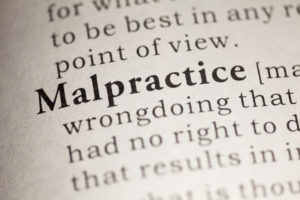Many health and cancer risks posed by working on and around trains are well-known. No one doubts that railroad employees continue to develop deadly cases of mesothelioma after breathing in asbestos fibers. On-the-job exposures to diesel fumes and radiation are increasingly recognized as the causes of wrongful deaths among rail workers. Even particulates from cargo like coal and sand have been linked to debilitating occupational illnesses.
It may not come as a surprise, then, that medical researchers and workplace safety experts regularly uncover previously unknown and ignored dangers for locomotive engineers, train conductors, trackmen, brakemen, and rail yard crew members. One such analysis that a fellow Federal Employers Liability Act (FELA) attorney alerted me to is a study that highlighted a link between long-term exposures to extremely low-frequency electromagnetic fields (EMFs) and two specific forms of cancer.
Writing in the journal Occupational & Environmental Medicine (OEM), researchers who analyzed the health records of a large group of retired Swiss railway workers discovered strong correlations between EMF exposures and myeloid leukemia, a blood cancer, and Hodgkin’s lymphoma/Hodgkin’s disease. EMFs are generated by all electronic devices, including computers, radios, and electric motors. Present-day engineers, who spend long shifts in locomotive cabs filled with such equipment, experience chronic EMF exposure in the same way that, a few decades ago, old dirty diesel engines filled engineers’ lungs with harmful smoke.
This OEM report is just one study, but the results provide strong evidence that rail corporations like Amtrak, CSX and Norfolk Southern should look into ways to limit train crews’ exposure to low-frequency electromagnetic fields. Shorter shifts, more-frequent crew changes and shielding electronic gear with EMF-absorbing materials could do much to protect railroad workers from cancer. As a railroad injury lawyer who has helped dozens of rail employees who suffered during retirement because their employers were negligent in reducing health hazards, I know that even small steps to limit exposures to cancer-causing agents can yield enormous benefits.
EJL

Rick Shapiro has practiced personal injury law for over 30 years in Virginia, North Carolina, and throughout the Southeastern United States. He is a Board-Certified Civil Trial Advocate by the National Board of Trial Advocacy (ABA Accredited) and has litigated injury cases throughout the eastern United States, including wrongful death, trucking, faulty products, railroad, and medical negligence claims. During his three-decade career, Shapiro has won client appeals before the VA Supreme Court, VA Court of Appeals, NC Supreme Court, SC Supreme Court, WV Supreme Court, TN Supreme Court, and three times before the United States Court of Appeals for the Fourth Circuit, underscoring Shapiro’s trial achievements. In addition, he and his law firm have won settlements/verdicts in excess of $100 million. His success in and out of the courtroom is a big reason why he was named 2019 “Lawyer of the Year” in railroad law in U.S. News & World Report's Best Lawyers publication (Norfolk, VA area), and he has been named a “Best Lawyer” and “Super Lawyer” by those peer-reviewed organizations for multiple years. Rick was also named a “Leader in the Law, Class of 2022” by Virginia Lawyers Weekly (total of 33 statewide honorees consisting of lawyers and judges across Virginia). And in September 2023, Rick was selected as a recipient of the National Board of Trial Advocacy (NBTA) 2023 President’s Award. Although many nominations were submitted from across the country, Rick was just one of eight attorneys chosen by the prestigious National Board which certifies civil trial attorneys across the U.S. Rick was also recently named to Virginia Lawyers Weekly 2024 Virginia’s Go To Lawyers Medical Malpractice. The attorneys awarded this honor are nominated by their colleagues and chosen by a panel from the publication.










Comments for this article are closed.